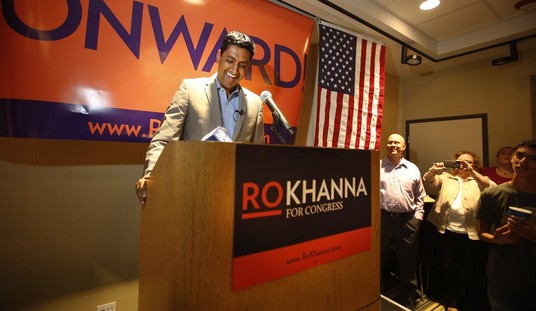Over the weekend, the FAA began furloughing tower personnel after the long-dreaded sequester cuts became a reality. The FAA, the airline industry, and DHS Secretary Janet Napolitano all warned Americans that this would lead to massive backups in airports across the country, and CBS News updates us on the latest in Nightmare on Sequester Street:
Commercial airline flights moved smoothly throughout most of the country on Sunday, the first day air traffic controllers were subject to furloughs resulting from government spending cuts, though some delays appeared in the late evening in and around New York. And even though the nightmarish flight delays and cancellations that the airline industry predicted would result from the furloughs did not materialize yet, the real test will come Monday, when traffic ramps up.
Information from the FAA and others showed that flying Sunday was largely uneventful, with most flights on time. There were delays in parts of Florida, but those were caused by thunderstorms.
Mark Duell at the flight tracking website FlightAware said that John F. Kennedy and LaGuardia airports in New York indicated delays due to lower staffing starting late Sunday evening. JFK averaged 70-minute delays for inbound flights, but no detectable departure delays. LaGuardia averaged 74-minute delays for inbound flights, and departure delays of 37 minutes.
The FAA website said that flights from Philadelphia and Orlando, Fla., into John F. Kennedy, LaGuardia and Westchester County airports were delayed due to staffing issues.
As Jim Geraghty pointed out earlier today on Twitter, though, the FAA’s Air Traffic Control System Command Center website showed almost nothing but green lights across the nation, even as late as 11:15 ET when all airports were open for full business. Newark International had a red light this morning, showing delays between 46-60 minutes on holds and taxiing, but as of 11:45 ET it was back to green, although it did flip to yellow at 1 pm (16-30 minute delays). Baltimore-Washington went red at midday. Only two other airports, LaGuardia and JFK in New York (orange) indicated any other significant delays, both for inbound rather than outbound flights. For LaGuardia, it’s weather related, and for JFK it’s runway maintenance.
The rest of the country — including LAX and all of the Midwestern hub centers — showed green, meaning no delays over 15 minutes.
Why might that be? Veronique de Rugy reminds us that air-traffic levels have fallen considerably over the last several years — while the FAA budget has not:
First, even after the cuts, the FAA’s operations, facilities, and equipment budget is going to be higher than it was in 2008. Planes were flying just fine back then, and no one was talking about closing large number of air-traffic-control towers. Moreover, as Mercatus Center’s Gary Leff reminds us:
Of course the FAA budget goes up year-over-year (in nominal terms) even under the sequester, and air traffic control is handling 27% fewer departures than prior to 9/11 with a budget that’s 41% higher (again, nominal $). And that’s aside from actually probably being able to make some cuts without noticeable service effects, even before having to put off capital investment in future air-traffic-control improvements.
Leff goes on to quote the Reason Foundation’s Bob Poole:
The Administration’s marching orders to all government agencies covered by the sequester law (including FAA’s parent, the Department of Transportation) seem designed to inflict maximum pain on the traveling public, in hopes of mobilizing aviation stakeholders, the media, and the traveling public to demand that Congress change the law. I have tried to figure out how a mandated cut of $600 million — under 5% — in the FAA’s $12.75 billion budget (excluding the exempted airport grants program) could possibly require all-hands furloughs reducing 47,000 daily personnel by 10% and the shut-down of 100 low-activity (mostly contract) towers and ending midnight shifts at 60 or more low-activity towers (which should have been done in any case). This appears to be a classic example of the “Washington Monument” strategy of trying to prevent budget cuts by proposing the worst possible method of coping — rather than finding 5% of the budget that could be eliminated or deferred with the least harm.
Second, the FAA’s ATC budget is loaded with what Cato Institute’s Tad DeHaven rightly calls “plane pork,” and it should be cut dramatically (it should be privatized, really). Just as the “bridge to nowhere” exposed how the federal government was spending money to build expensive bridges that serve no one, a look at where some of the FAA money is going reveals how much of taxpayers’ dollars is spent on small airports with no passengers[.]
So far, they have succeeded in mobilizing the airlines and the unions, which have sued the FAA over the furloughs. If this Delayageddon doesn’t materialize, however, it’s going to make all of these stakeholders look pretty silly — and underscore the need to get tough on government spending.







Join the conversation as a VIP Member